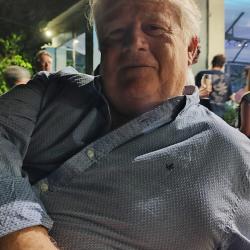
Ventura Pérez, Oscar Néstor
ResearcherResearch interests
Theoretical and Computational ChemistryWorking area
Specialized in the application of computational chemistry methods for the solution of chemical and biochemical problems. Since 1977, when my investigative activities began, I practically implemented all the methods developed for calculations of geometry, energy, espectroscopy and reaction pathways, in an static and dynamic form. The most important contributions that have been made to solve problems in the mentioned areas are the following: (a) determination of reaction pathways for chemical transformations in which the solvent actively participates, such as the isomerización of hydroxámic acids, enolización reactions and others dolicas or dehalogenation; (b) the production of thermochemical information for small compounds but of complicated electronic structure, such as for example fluoride oxides, ROO radicals, polycyclic hydeocarbons, and blue molecules such as sulfur and sulfuric acids, in many cases yendo correct experimental determinations not specified precisely; (c) the investigation of halogenated organic substances as well as contaminants as used in refilling, for example perfluorocarbons, trifloromethanol, bencenos and chlorinated phenoles, and polychlorobenzofurans; (d) study of enzymatic reactions and proposal of new action mechanisms, for example for laldosa reductasa, epóxido hidrolasa and dehalogenasas, supporting and feeding back to the experimental studies; (e) studies on complex transition metals (Fe, Rh, Re, Tc) and on the interaction between organic molecules and nanoparticles (for example the coating of gold particles) and absorption of organic molecules on surfaces, e.g. mexenos. At present, my investigations point to three great programs, which have common points and within which my investigation projects are inscribed. The first (ECOCOP) focuses on implementing theoretical chemistry tasks to solve problems in atmospheric chemistry (persistent organic contaminants) and in general contamination problems (for example chloroorganics). The second program (BIOCAB) aims at the study of enzymatic reaction mechanisms, especially metaloenzymes, such as for example oxygen and peroxidases, but also others such as aldol reductase or human phosphates. Finally, the BASINMOL program focuses on basic studies of thermochemical and kinetic problems and on mesoscopic processing to realize molecular chemical engineering calculations, particularly in combustion and atmospheric chemistry. The product of these studies is communicated periodically to the scientific community. As of November 2023, I have produced more than 140 scientific articles and have delivered more than 175 communications at conferences, invited conferences and mini-cursillos, in 30 countries in America, Europe and Africa. At present we maintain collaboration with scientists from Argentina, USA, France, Italy, Germany and Greece. In recent times, a program has been rolled out to convert the CCBG into a reference center in thermochemical and kinetic studies of atmospheric reactions with experimental and theoretical groups from Argentina, Italy, France, Greece, USA and Uruguay, to whom it is hoped that join Spain in the short square. In this context, we are directing postdoctoral and doctoral students, as soon as we will be conducting stages of students from Argentina and France to carry out investigations in certain areas.Personal information
Email: onv@fq.edu.uyORCID: 0000-0001-5474-0061
SCOPUS: 7004288086
CVUy: see
Institution: Facultad de Química - Udelar
Career at PEDECIBA
Chemistry Area
As researcher
| Motive | Start date | Minutes | |
|---|---|---|---|
| Investigador - Evaluación | Grado 5 | 11/12/2019 | View minutes |
| Investigador - Evaluación | Grado 5 | 23/07/2014 | View minutes |
| Investigador - Evaluación | Grado 5 | 06/05/2010 | View minutes |
| Investigador - Evaluación | Grado 5 | 12/05/2005 | View minutes |
| Investigador - Evaluación | Grado 5 | 15/05/2003 | View minutes |
| Investigador - Evaluación | Grado 5 | 18/12/1997 | View minutes |
| Investigador - Evaluación | Grado 5 | 04/02/1993 | View minutes |
| Investigador - Cambio de grado (evaluación) | Grado 5 | 19/07/1989 | View minutes |
| Investigador - Evaluación | Grado 4 | 19/07/1989 | View minutes |
| Investigador - Ingreso | Grado 4 | 01/09/1987 | View minutes |